For the coastal community of Malhiao, Municipality of Badian, Cebu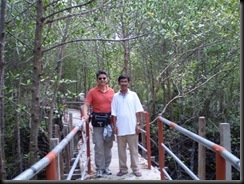 , it’s all about economics. It is having a dependable livelihood so that there will be food on the table. This takes precedence over other matters, including conservation. That is unless the twain shall meet.
, it’s all about economics. It is having a dependable livelihood so that there will be food on the table. This takes precedence over other matters, including conservation. That is unless the twain shall meet.
Mangroves have long been the source of firewood and charcoal, building materials, as well as shellfish and other edibles, for many coastal communities. Mangrove charcoal is particularly prized for the extended high heat it can provide. Shrouded for generations with a mantle of consistency and  dependability, the thought that the bounty from the mangroves will one day decline was far from anyone’s mind. But as burgeoning populations demanded more, the mangroves began to provide less and less. This, fortunately, did not escape notice from the leaders of Barangay Malhiao, and it was decided that steps had to be taken.
dependability, the thought that the bounty from the mangroves will one day decline was far from anyone’s mind. But as burgeoning populations demanded more, the mangroves began to provide less and less. This, fortunately, did not escape notice from the leaders of Barangay Malhiao, and it was decided that steps had to be taken.
In 2001, the community formed the Malhiao Resource Management Multipurpose Cooperative to spearhead the efforts to protect and conserve 73 hectares of its remaining mangroves, entering into a 25-year Community Based Forest Management Agreement with the Department of Environment and Natural Resources. It did not take 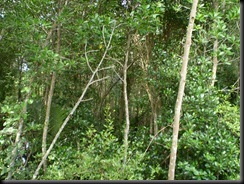 long for them to realize that protection and conservation is not enough. For as long as there are no alternative means of livelihood available, it will be difficult to stop the poaching within. One alternative, which would force any enterprise depending on it to support the mangroves, is tourism development.
long for them to realize that protection and conservation is not enough. For as long as there are no alternative means of livelihood available, it will be difficult to stop the poaching within. One alternative, which would force any enterprise depending on it to support the mangroves, is tourism development.
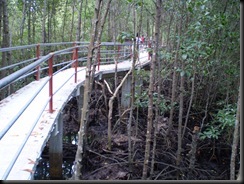 Last year, Seacology agreed to fund a 300 linear meter boardwalk and view deck for Malhiao in exchange for the community’s commitment to maintain a no-take policy on their 73-hectare mangrove. The implementing body would be Tambuyog, an NGO that has already been working with the community for some time.
Last year, Seacology agreed to fund a 300 linear meter boardwalk and view deck for Malhiao in exchange for the community’s commitment to maintain a no-take policy on their 73-hectare mangrove. The implementing body would be Tambuyog, an NGO that has already been working with the community for some time.
Last weekend, a month after Tambuyog informed me that the project has been completed, I revisited Malhiao. To my surprise, I found only a 100-meter boardwalk, not the 300-meter I was expecting. I was not consulted about the change, nor was  Seacology’s permission sought. (This would become the subject of a heated discussion between Zeena Manglinong of Tambuyog and me after I got back from the trip, particularly what it means to ‘consult’ and why securing permission from the donor before implementing changes is important.) But this is an issue between Seacology and Tambuyog. My immediate concern was to find out if the community was expecting more from Seacology but now feels shortchanged.
Seacology’s permission sought. (This would become the subject of a heated discussion between Zeena Manglinong of Tambuyog and me after I got back from the trip, particularly what it means to ‘consult’ and why securing permission from the donor before implementing changes is important.) But this is an issue between Seacology and Tambuyog. My immediate concern was to find out if the community was expecting more from Seacology but now feels shortchanged.
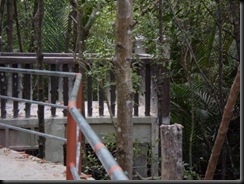 The boardwalk, short as it is, is sturdy. The walkway and the tall abutment posts are of thick cement with reinforced bars, and the steel railings provide a very secure support for, say, birdwatchers. It actually felt nice and solid.
The boardwalk, short as it is, is sturdy. The walkway and the tall abutment posts are of thick cement with reinforced bars, and the steel railings provide a very secure support for, say, birdwatchers. It actually felt nice and solid.
As Delfa Talaid, my companion from Tambuyog, and I approached the end, I could see a bamboo network, which the villagers were using to get from one point of the mangrove to another, particularly within the five-hectare multi-use section. The multi-use area has been cordoned off so that it 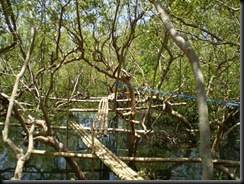 would be not confused with the no-take zone. I would learn later on that this bamboo network they call the “catwalk” is envisioned to become, module by module, an extension of the boardwalk each time funds become available. Already the Badian Municipal Mayor’s office has allocated P150,000 for this. Good enough for about six more boardwalk modules, I am told.
would be not confused with the no-take zone. I would learn later on that this bamboo network they call the “catwalk” is envisioned to become, module by module, an extension of the boardwalk each time funds become available. Already the Badian Municipal Mayor’s office has allocated P150,000 for this. Good enough for about six more boardwalk modules, I am told.
The officers of the cooperative and other villagers were waiting for us in a makeshift hut at the middle of the multi-use area. Also with them was Mai-mai Saludsod, a technical officer from the Bureau of 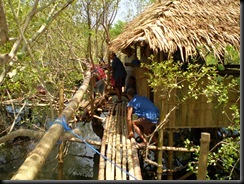 Fisheries and Aquatic Resources (BFAR). They were conversing in Cebuano, a dialect I have yet to learn, but I could tell from the gestures that they were discussing the implementation of aquasilviculture, a mangrove-friendly fish farming system that the BFAR is trying to popularize and is helping them with.
Fisheries and Aquatic Resources (BFAR). They were conversing in Cebuano, a dialect I have yet to learn, but I could tell from the gestures that they were discussing the implementation of aquasilviculture, a mangrove-friendly fish farming system that the BFAR is trying to popularize and is helping them with.
The cooperative had an election early this year, but it’s basically musical chairs as I have already met most of the current officers in my previous visit and there were only a few new faces. They animatedly described the difficulties they had in constructing the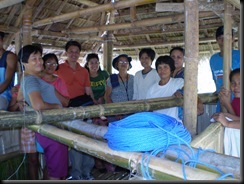 boardwalk, mostly because they had to wait for the tide to go out and quickly dig and pour cement for the posts before the tide comes back in. Then they had to wait until the tide conditions are ideal again before moving on to make the next post. They are darn proud of their work, and yes it is the length they anticipated to build from the Seacology funds.
boardwalk, mostly because they had to wait for the tide to go out and quickly dig and pour cement for the posts before the tide comes back in. Then they had to wait until the tide conditions are ideal again before moving on to make the next post. They are darn proud of their work, and yes it is the length they anticipated to build from the Seacology funds.
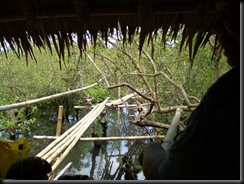 From the start, a key feature of the boardwalk that the villagers insisted on is that it should be durable enough so that only the most minimal of maintenance would be needed in the long run, and they were prepared to sacrifice the boardwalk’s length for this. It seems, at least, that their expectations were met in this respect.
From the start, a key feature of the boardwalk that the villagers insisted on is that it should be durable enough so that only the most minimal of maintenance would be needed in the long run, and they were prepared to sacrifice the boardwalk’s length for this. It seems, at least, that their expectations were met in this respect.
The harvest from the multi-use zone is also increasing, helped in no 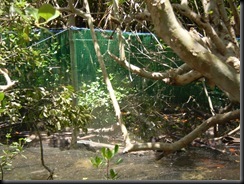 small measure by the BFAR through its technical assistance. Groupers from Malhiao are finding their way to the markets of other municipalities, and mudcrab farming is being started. From where we were, I could see the green netting that separates the multi-use zone and the no-take zone.
small measure by the BFAR through its technical assistance. Groupers from Malhiao are finding their way to the markets of other municipalities, and mudcrab farming is being started. From where we were, I could see the green netting that separates the multi-use zone and the no-take zone.
Folks from other villagers do not venture into the mangroves, I am told, but they are in the process of organizing regular patrols anyway just in case some outsiders are tempted to poach. I add that it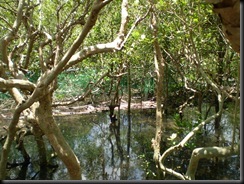 would be helpful if signs are put up to mark the no-take zone, as well as to identify the various species of mangroves for the benefit of tourists.
would be helpful if signs are put up to mark the no-take zone, as well as to identify the various species of mangroves for the benefit of tourists.
Teachers from five public schools within Badian, through the assistance of the Regional Department of Education, are piloting a curriculum that integrates conservation ecology with visits to the mangroves of Malhiao when school opens in June. Students will be charged five pesos each (about 12 US cents), adults will pay ten pesos (25 US cents), and a pre-tour briefing will be given to all visitors.
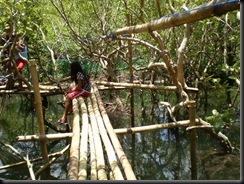 The conservation efforts of the villagers have been noticed by the provincial government when it recently recognized Malhiao as one of three most improved barangays of Badian because of its eco-tourism efforts, a barangay officer beamed as we were having lunch at a new building which will function as the village tourist center. For now, the structure serves as the headquarters of the cooperative’s nascent catering business that prepared the food, fresh fish and clams from the multi-use zone mostly, we were eating. A blackboard at one side lists
The conservation efforts of the villagers have been noticed by the provincial government when it recently recognized Malhiao as one of three most improved barangays of Badian because of its eco-tourism efforts, a barangay officer beamed as we were having lunch at a new building which will function as the village tourist center. For now, the structure serves as the headquarters of the cooperative’s nascent catering business that prepared the food, fresh fish and clams from the multi-use zone mostly, we were eating. A blackboard at one side lists  the activities being done at the mangroves, the catering commitments, and profit projections. It certainly gives the impression that mangrove visitors will have no problem looking for good hot food while in the area. Only 30 minutes drive from the beaches and dive destinations of Moalboal, it should not take too much to attract tourists there who are on the lookout for something different.
the activities being done at the mangroves, the catering commitments, and profit projections. It certainly gives the impression that mangrove visitors will have no problem looking for good hot food while in the area. Only 30 minutes drive from the beaches and dive destinations of Moalboal, it should not take too much to attract tourists there who are on the lookout for something different.
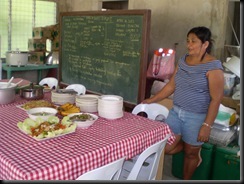 Livelihood alternatives, it seems, can marry well with conservation efforts provided a community is determined and motivated enough. While eco-tourism still has to take flight in Malhiao, the community is already astir with other complementary endeavors. Their capacity to move ever forward with new ideas backed with action is what, I think, will carry them from one success to another. Consequentially, that will spell success for the conservation of the mangroves too.
Livelihood alternatives, it seems, can marry well with conservation efforts provided a community is determined and motivated enough. While eco-tourism still has to take flight in Malhiao, the community is already astir with other complementary endeavors. Their capacity to move ever forward with new ideas backed with action is what, I think, will carry them from one success to another. Consequentially, that will spell success for the conservation of the mangroves too.
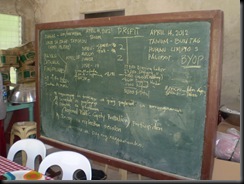 After the long lunch, while Delfa and I were waiting for the bus that will take us back to Cebu City, some villagers were loading tables, chairs, serving dishes and more food in a small truck. They will be catering to a dinner party 60 kilometers away, at the Municipality of Santander.
After the long lunch, while Delfa and I were waiting for the bus that will take us back to Cebu City, some villagers were loading tables, chairs, serving dishes and more food in a small truck. They will be catering to a dinner party 60 kilometers away, at the Municipality of Santander.